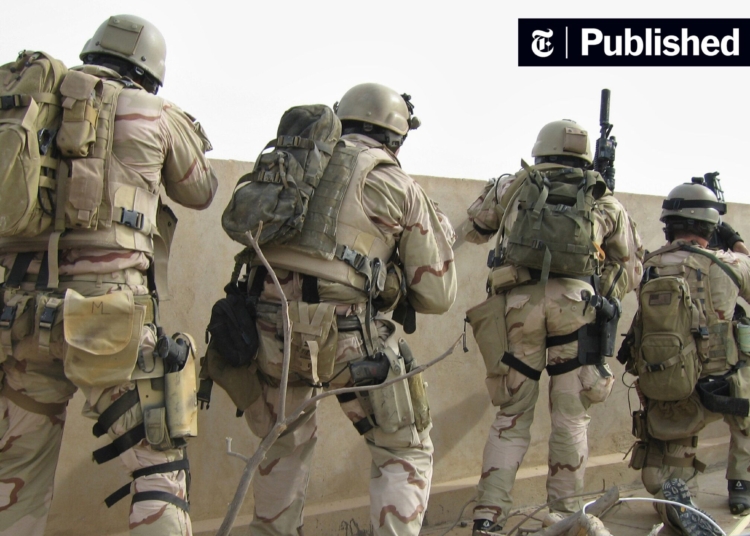The U.S. Special Operations Forces (SOF) are elite military units responsible for covert missions around the world. They protect national security and combat terrorism, often working behind the scenes. The roots of SOF can be traced back to World War II, and they have evolved and expanded over time. Joining SOF is extremely difficult, with a rigorous selection process and intense training. Covert missions are the core of their work, ranging from counterterrorism to intelligence gathering. The SOF’s successes go largely unnoticed, but they face challenges such as mental and physical strain. They collaborate with other military units and continually evolve to meet changing demands of warfare. Their dedication and commitment make them an invaluable asset to the United States.
The U.S. Special Operations Forces: Behind the Scenes of Covert Missions
Introduction
The U.S. Special Operations Forces (SOF) are the elite military units responsible for executing covert missions around the world. These highly trained and specialized individuals play a crucial role in protecting national security and combating terrorism. The nature of their work often remains hidden from the public eye, but their efforts serve to safeguard the country’s interests both at home and abroad.
The Genesis of Special Operations Forces (SOF)
The roots of SOF can be traced back to World War II, where small teams of unconventional soldiers were tasked with intelligence gathering, sabotage, and guerrilla warfare. Recognizing the strategic value of these specialized units, the United States officially formed the Special Forces in 1952. Over time, additional branches, such as Navy SEALs, Army Rangers, and Delta Force, were established to handle specific types of missions.
Selection and Training
Joining the ranks of the SOF is no easy feat. The rigorous selection process is designed to weed out all but the most qualified candidates who possess exceptional physical and mental capabilities. Potential candidates undergo intense physical fitness tests, psychological evaluations, and extensive background checks.
Once selected, SOF operatives receive training that pushes them beyond their limits. They are honed to become masters of their craft, be it marksmanship, hand-to-hand combat, demolitions, or intelligence gathering. The training replicates real-world scenarios, ensuring these individuals acquire the necessary skills and mental fortitude to operate in high-stress environments.
Covert Missions
Covert missions form the core of the SOF’s work. These operations are highly classified and shielded from public scrutiny to maintain operational security. The nature of these missions varies greatly, ranging from counterterrorism efforts, hostage rescues, intelligence gathering, and direct action against high-value targets.
One of the most famous examples of SOF involvement is the mission that led to the killing of Osama bin Laden in 2011. A team of Navy SEALs, known as SEAL Team Six, executed a daring raid on his compound in Pakistan, successfully neutralizing the world’s most wanted terrorist.
Operational Successes and Challenges
The SOF’s impressive operational successes are often overshadowed by the clandestine nature of their work. Their contributions go largely unnoticed, but they have played critical roles in securing victories during various conflicts.
However, operating in the shadows brings its own set of challenges. These include intense mental and physical strain, long periods away from loved ones, and the constant pressure to succeed in high-risk missions. Their dedication and sacrifice cannot be overstated.
Collaboration with Other Military Units
The SOF works alongside other military units, both domestically and internationally. This collaboration allows them to pool resources, expertise, and intelligence to achieve common goals effectively. Units like the Army’s 160th Special Operations Aviation Regiment, known as the “Night Stalkers,” provide air support for SOF missions, ensuring quick and efficient movement when needed.
The Evolution of Special Operations Forces
As the nature of warfare continues to evolve, so do the responsibilities of the SOF. The fight against terrorism, cyber threats, and unconventional warfare demands constant adaptation and innovation. The SOF invests heavily in research and development to remain at the cutting edge of military technology.
Moreover, the SOF recognizes the importance of cultural understanding and the development of foreign relationships. Their operatives receive language and cultural training to enable successful missions in diverse environments worldwide.
Conclusion
The U.S. Special Operations Forces stand as an indomitable force in covert operations. Their dedication, unmatched skills, and unwavering commitment to national security make them an invaluable asset to the United States. Behind the scenes, these silent warriors continue to accomplish extraordinary feats in the face of adversity, making the world a safer place.













